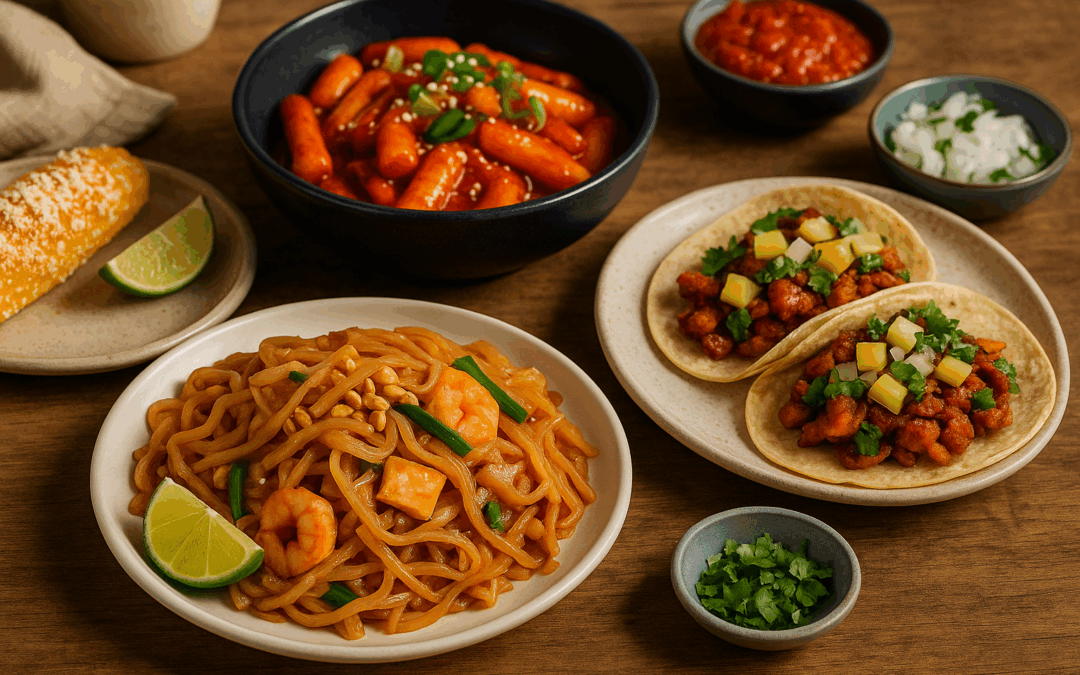There’s something magical about the sizzling, savory smells of a bustling street food market. Whether you’re wandering the night stalls of Bangkok or grabbing a quick bite from a cart in Mexico City, street food delivers bold flavors, quick bites, and a window into local culture. The good news? You can bring that same global excitement to your own kitchen with just a few key ingredients and smart techniques.
From Cart to Kitchen: Making Street Food Approachable

Street food is designed for speed and accessibility, which makes it surprisingly home-friendly. Many of the world’s favorite street dishes—Vietnamese banh mi, Indian chaat, Middle Eastern falafel—require little more than a stovetop, a sharp knife, and a handful of spices. If your local grocery doesn’t carry specialty items like tamarind paste or paneer, ingredient swaps can still deliver great results. Greek yogurt makes a great stand-in for labneh, while firm tofu can sub for paneer in a pinch. Don’t be afraid to experiment—street food is about improvisation as much as tradition.
Signature Dishes, Simplified

Start with dishes that deliver maximum flavor with minimal fuss. Pad Thai, for example, gets its iconic tang from fish sauce, tamarind, and lime—easily mimicked with pantry substitutes like soy sauce, vinegar, and brown sugar. Tacos al pastor can be recreated with marinated pork and pineapple on a hot skillet, capturing the essence of the dish without needing a vertical spit. Want something snackable? Try Korean tteokbokki: chewy rice cakes simmered in spicy gochujang sauce, finished with scallions and sesame seeds. These recipes don’t require expert skills—just a willingness to stir-fry, season boldly, and taste as you go.
A Bite of Culture with Every Recipe

Making street food at home is also a chance to explore the stories and traditions behind each dish. Elote isn’t just corn—it’s a staple of Mexican street life, served grilled and slathered in creamy, spicy toppings. Japanese takoyaki began as festival food and now lives in corner stalls across Osaka. Researching the origins of your chosen dish—its ingredients, its rituals, its regional twists—can turn cooking into cultural immersion. For the full experience, set the scene with music, serve your food on paper trays or banana leaves, and enjoy it al fresco. The spirit of the street is half the flavor.

